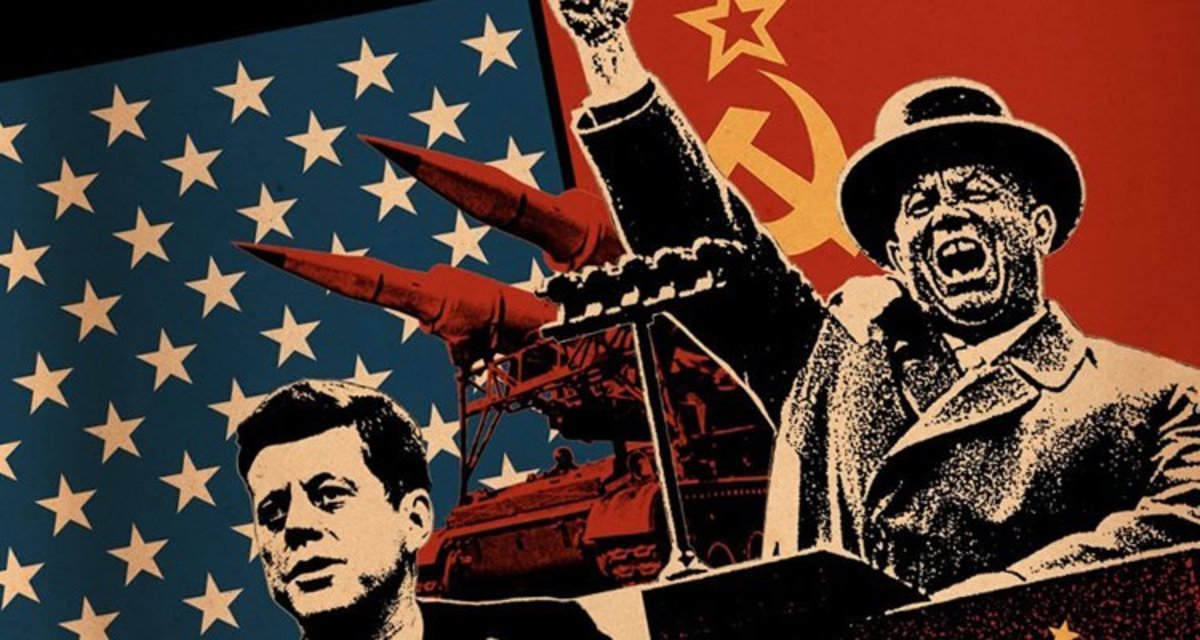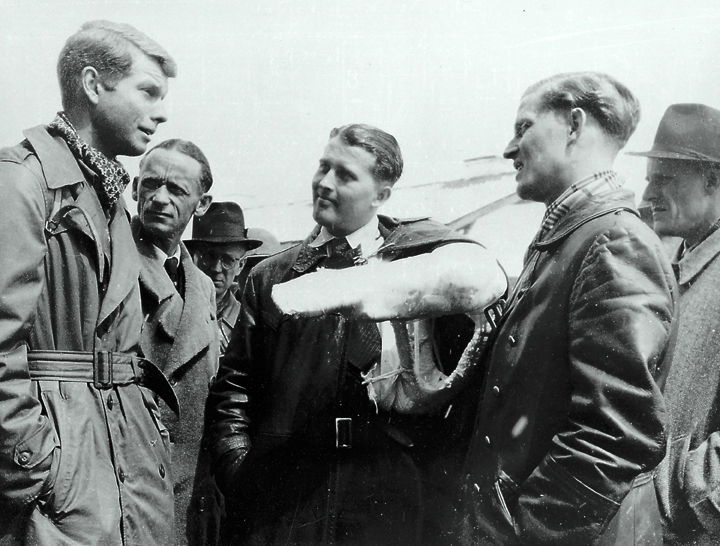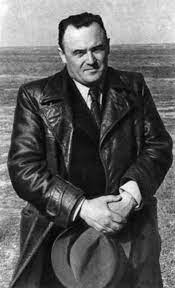Early Missiles
The Cold War
Sputnik-1's Launch
The Space Race
Early Space Technology Agencies
Bibliography
Cold War
In the midst of the Cold War, the United States and the Soviet Union were trying to scare each other with technological advancements. After WWII, America and the Soviet Union wanted Wernher von Bruan and other German scientist to help recreate the famous V-2 missiles to study for the Cold War.

Cold War Metaphorical Image, history.com, Unknown

Wernher von Braun Surrenders to the U.S, Encyclopedia of Alabama, May 2, 1945.
Not long after Wernher von Bruan and his crew moved to America, the Soviets received news of America's success. Soviet Union rocketeer Sergei Korolev started his own tests on a new rocket, the R-1.
Sergei Korolev was Fascinated by aircraft; he designed his first glider at 17. He joined the University of Moscow were his interest shifted to rocket propulsion. The R-7 was based on a concept of stacked stages created by the Germans. In August, 1957, the R-7 was successfully launched from a rocket site near Baikonur in Kazakhstan. Dubbed ‘Semyorka’, the R-7 was powerful enough to put satellites into orbit. However, as development of a payload took longer than planned, Korolev's team designed a ‘minimum satellite’, Sputnik-1.

Sergei Korolev, European Space Agency, Unknown
Home
Next